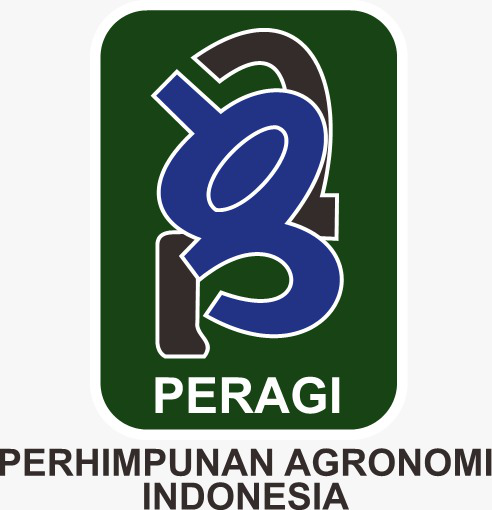Morphological Diversity of Double Petal Telang (Clitoria ternatea L.) in Several Flower Colors
Abstract
Telang is a plant that grows wild and is cultivated by the people of Indonesia. Telang flowers originate from Ternate Island, Maluku, Indonesia. The most widely used part of Telang, especially in food coloring, is the flower, where Telang flowers can produce a blue color. This study aims to assess the diversity of four types of double-petal Telang flowers based on plant morphology. This study used a Non-Factorial Randomized Group Design (RAK) with treatments in 4 colors of double-petal Telang flowers. The number of replications required was 5 replications, so there were 20 experimental blocks, each experimental block was planted with 3 plants, the number of samples taken from each experimental block was 2 plants and 3 flower samples were taken from each plant. Morphological observations were made directly in the field; the morphological characters observed included varieties and generative. For each color 10 plants were selected. The results of this study show that some types of Telang showed good growth, such as plant height, and then, for the generative period, no significant difference was produced between the types of Telang. Some of the morphology of leaves and flowers have visible similarities. This study's conclusion is based on observing vegetative, generative, and morphological characters of several types of Telang. The observations found that in the vegetative period, some Telang tended to grow fast, but the purple and blue Telang had the highest plant height. Then, in the generative period, the average observation of several types of Telang was not significantly different. The morphology of Telang itself also still has similarities, such as leaf morphology and Telang flowers.Downloads
References
Ayu Martini, N. K., Ayu Ekawati, N. G., & Timur Ina, P. (2020). Pengaruh Suhu Dan Lama Pengeringan Terhadap Karakteristik Teh Bunga Telang (Clitoria ternatea L.). Jurnal Ilmu dan Teknologi Pangan (ITEPA), 9(3), 327. https://doi.org/10.24843/itepa.2020.v09.i03.p09
Azam-Ali, S., & Squire, G. (2002). Principles of Tropical Agronomy. CABI Publishing.
Aziza, V., Ulimaz, T. A., Ustari, D., Suganda, T., Concibido, V., Irawan, B., & Karuniawan, A. (2021). Keragaman Fenotipik Bunga Telang Double Petal Asal Indonesia dan Thailand Berdasarkan Morfologi Bunga. Al-Kauniyah: Jurnal Biologi, 14(1), 78–89. https://doi.org/10.15408/kauniyah.v14i1.15558
Barik, D. P., Mohapatra, U., & Chand, P. K. (2007). Rapid plant regeneration through in vitro axillary shoot proliferation of butterfly pea (Clitoria ternatea L.)—a twining legume. In Vitro Cellular & Developmental Biology-Plant, 43(2), 144-148.
Budiasih, K. S. (2017). Potensi Bunga Telang (Clitoria ternatea L) Sebagai Antifungi Candida albicans , Malasezia furfur , Pitosprorum. Jurnal Ilmu Dan Teknologi Pangan (ITEPA), 1(2), 183–188.
Handito, D., Basuki, E., Saloko, S., Dwikasari, L. G., & Triani, E. (2022). ANALISIS KOMPOSISI BUNGA TELANG (Clitoria ternatea). 4.
Maskromo, I., Tenda, E. T., Tulalo, M. A., Novarianto, H., Sukma, D., Sukendah, S., & Sudarsono, S. (2016). Keragaman Fenotipe Dan Genetik Tiga Varietas Kelapa Genjah Kopyor Asal Pati Jawa Tengah. Jurnal Penelitian Tanaman Industri, 21(1), 1. https://doi.org/10.21082/littri.v21n1.2015.1-8
Rizkawati, M., Fairuz, R. A., & Absari, N. W. (2023). Potensi Tanaman Herbal Bunga Telang (Clitoria ternatea) Sebagai Alternatif Antihipertensi. Healthy Tadulako Journal (Jurnal Kesehatan Tadulako), 9(1), 43–50. https://doi.org/10.22487/htj.v9i1.637
Sari, P. K., Rosanti, D., & Putri, Y. P. (2022). Karakteristik Tanaman Hias Pekarangan Rumah di Kelurahan Plaju Ulu Kota Palembang. Indobiosains, 4(1), 15. https://doi.org/10.31851/indobiosains.v4i1.6199
Unawahi, S., Widyasanti, A., & Rahimah, S. (2022). Pemanfaatan ekstrak bunga Telang (Clitoria ternatea Linn) sebagai pewarna alami pada minuman bersoda. Agrointek : Jurnal Teknologi Industri Pertanian, 16(2), 263–270. https://doi.org/10.21107/agrointek.v16i2.13033
Widiya, M., Jayati, R. D., & Fitriani, H. (2019). Karakteristik Morfologi dan Anatomi Jahe (Zingiber Officinale) Berdasarkan Perbedaan Ketinggian Tempat. BIOEDUSAINS: Jurnal Pendidikan Biologi Dan Sains, 2(2), 60–69. https://doi.org/10.31539/bioedusains.v2i2.854
Yuniarsih, N., Fatwa, D. N., Firdaus, M. A., Rifqisyah, M., Syamsiah, N., Pramasari, S., & Yuliani, Y. (2023). Literature Review Artikel: Uji Aktivitas Antibakteri Sediaan Body Wash Ekstrak Etanol Bunga Telang. https://doi.org/10.5281/ZENODO.8260351
Copyright (c) 2024 Tolhas Alfred Lumban Batu, Kamsia Dorliana Sitanggang, Siti Hartati Yusida Saragih, Yusmaidar Sepriani

This work is licensed under a Creative Commons Attribution 4.0 International License.
Authors who publish with Jurnal Agronomi Tanaman Tropika (JUATIKA) agree to the following terms:
Authors retain copyright and grant the Jurnal Agronomi Tanaman Tropika (JUATIKA) right of first publication with the work simultaneously licensed under a Creative Commons Attribution License (CC BY 4.0) that allows others to share (copy and redistribute the material in any medium or format) and adapt (remix, transform, and build upon the material for any purpose, even commercially) with an acknowledgment of the work's authorship and initial publication in Jurnal Agronomi Tanaman Tropika (JUATIKA).
Authors are able to enter into separate, additional contractual arrangements for the non-exclusive distribution of the journal's published version of the work (e.g., post it to an institutional repository or publish it in a book), with an acknowledgment of its initial publication in Jurnal Agronomi Tanaman Tropika (JUATIKA). Authors are permitted and encouraged to post their work online (e.g., in institutional repositories or on their website) prior to and during the submission process, as it can lead to productive exchanges, as well as earlier and greater citation of published work.







 More Information
More Information



